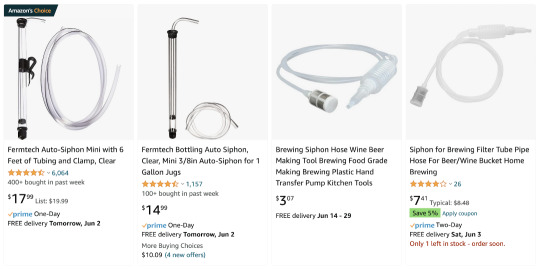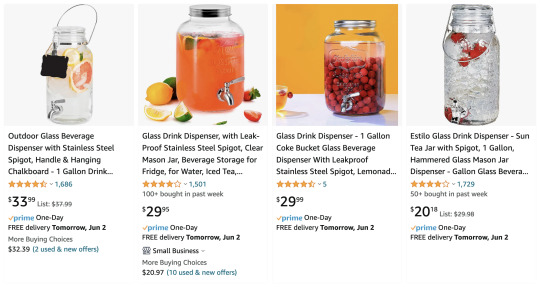#'put the honey in cold or lukewarm water in order to not kill the bacteries'
Text
hm. accidentally made mead ??
#3615 my life#actually it may be just a step before mead but like. it's still mead#which i thought was more than fermented honey but no it's just that and some stuff from flavor#'put the honey in cold or lukewarm water in order to not kill the bacteries'#ma'am they've been boiled and they're still alive and thriving#so the explanation is that i very often not finished my tea#which actually contains zero tea. just water honey lemon juice and ginger-lemon-honey bits (infusion pour les français)#and i use metals bottle now so that shit is screwed up tight after the 'oxygen period'#so often when i don't finish it and forget about it for coughs hours it will have...#in my mind like milk left over the night. the taste change and is weird and there's a little bit of gaz when opening the bottle#this time i just left it uuuh a few days. unopened.#and tonight i remembered that i do not have a good track with bottles half filled left unopened for too long#and i did well because the top did nearly come out of my hand when opening it because of the gaz pressure#wait with the lemon maybe it's not mead...it appears there's three kind of fermentation#i'm a bit sad i don't like fermentated things because apparently it's VERY good for the guts#which i have zero problem with. i could eat cement. but just in case you know ?#maybe my body makes me dislike fermentated stuff because i've got all the peeps i need down there for everything to work well#anyway. down the drain it went. don't like fermentation don't like alcohol
1 note
·
View note
Text
Mead Making for the Blithe and Erratic: A Tutorial
For a One Gallon Batch:
Ingredients ($20USD+):
~3lbs (48oz, 1.5L) raw, unprocessed honey
~2.5quarts (2.4L) drinking water
1 packet of dry yeast
Supermarkets typically sell honey in 1lb/16oz containers or smaller. You can find 3lb containers if you order online. Make sure to buy raw, unprocessed honey. The pasteurization process may destroy the anti-bacterial enzymes that protect your batch from contamination during the initial stages of the brewing process.
If you trust your tap water enough to drink it you can use that, otherwise you can buy a gallon of whatever bottled spring water you prefer (just don't use mineral water or distilled water).
Wine yeast is preferred, but bread yeast works too; the resulting mead will have slightly lower alcohol content if made with bread yeast. Note: mead with higher alcohol content is more shelf-stable.
Equipment ($10USD+):
1 gallon carboy set (includes 1gal./3.8L glass brewing vessel plus drilled rubber stopper w/ airlock; sold as a unit for $15 on amazon)
brewing siphon (about $5+ on amazon; DO NOT get a petrol siphon; product must be made with food safe materials)
optional: 1gal. airtight drink dispenser with spigot** (see footnotes)
If you'd rather not pay for a glass carboy, you can instead use any empty plastic gallon-sized milk/juice jug you have lying around. You'll still need to get an airlock ($2+ on amazon). Punch a hole through the lid of your plastic jug to attach the airlock (borrow your neighbor's drill), then seal off any potential air leaks with food-safe cling wrap, Elmer's glue, or some other non-toxic sealant.


Steps:
Add honey* to the brewing vessel + enough lukewarm drinking water to fill it 85% full.
Let the honey fully dissolve in the water. Stir it, or screw on the lid and shake it.
Add 1 tsp yeast.
Kill the remainder of the yeast packet in half a cup of boiling water (you can nuke it in the microwave) and add that too. It gives the yeast some extra nutrients to help it ferment.**
Add a little more water until your fermenting vessel is 85-90%full.
Put in the rubber stopper/airlock.
Store the carboy somewhere room temperature. Ideal fermenting temperatures vary depending on the yeast. Wine-strength mead ages well at room temperature (64-75º F). Mead with a lower alcohol level should be aged at slightly cooler temperatures.
Swish the liquid in the carboy around once a day for the first 5 days, to make sure the honey really is fully dissolved and not settling to the bottom.
Wait for fermentation to finish (usually 3 or 4 weeks but it may take longer) -> when air bubbles stop coming out of the airlock, it's done fermenting (give it a couple weeks after it seems to have stopped to be extra sure).
Your mead will still be cloudy at this point. Remove any solids you might have put in the brew like fruit or spices (you can use a metal sieve, or cheese cloth, or a coffee filter, or whatever you have on hand to strain it), and seal off the container (be SURE fermentation has stopped, because you can EXPLODE your container if you seal it off when fermentation is still going.***
Wait for the mead to clear. All the yeast/particulates from the honey will slowly settle to the bottom of the container now that it has completed fermentation. This might take several weeks, or even several months**** depending on which honey you used.
Transfer the cleared mead into a new container(s), leaving behind any particulates and dead yeast that have settled to the bottom of the container.
At this point (3-4 months after you started the batch) you can go ahead and drink it, OR if it doesn't taste good yet, you can continue to let it age for up to 2 years in an airtight container***** in a temperature controlled root cellar/wine cellar/wine fridge.
Best served cold. Chill before drinking.
.
*If the honey is too thick to pour directly into the carboy, warm a half gallon of water in a large pot pot (no hotter than 95°F/35°C, which is the internal temperature of a beehive -> DO NOT boil) and let the honey dissolve in it before adding it to carboy.
**You can also buy commercial yeast nutrient. Or you can not add any nutrient and your mead will probably still come out fine, but it might take longer to ferment and require more aging to taste good.
***If your container is a conventional jar/jug, you will need to buy a brewing siphon for step 10. If, however, you use a jar/jug with an attached spigot, you will not need a siphon.

The spigot will allow you to pour off the cleared mead, while leaving behind any unwanted residue that has settled to the bottom of the container. Do TEST the spigot first to make sure it doesn't leak.
****I know I said you could us a plastic jug, but once the fermentation is complete you should transfer it to a glass container(s) to let it clear. You can buy additives to make it clear faster by searching for "brewing clarifiers" online. Or you can just drink it cloudy if it passes your personal taste test.
*****If you want it to have an oaky flavor, you can age it in an oak barrel, or you can get the same effect by adding oak chips to the batch before sealing it off in a glass container.
.
I see a lot of brewing guides tell you that yeast nutrient is absolutely necessary. My mead has always tasted fine without it. YMMV.
You can buy additional equipment to measure exactly how alcoholic your mead is and exactly what the pH is in your carboy etc., etc., but I just don't see the point unless you're a professional brewer making mead with intent to sell.
Some mead guides will tell you that you need to buy special sanitizer and use special gloves and build a special cleanroom to avoid contamination. Contamination risk is higher if you're doing a fruit mead using a fruit that rots easily like raspberries. But if you stick to basics, risk is low since both raw honey and the alcohol it is converted into have anti-fungal/anti-bacterial properties. Just wash & rinse your hands and your equipment with regular dish soap.
Honestly, as long as you don't let any NYC sewer rats piss directly in your carboy and you should be fine.
3 notes
·
View notes